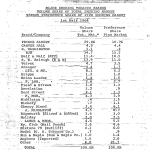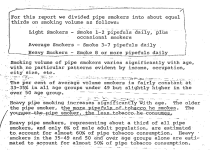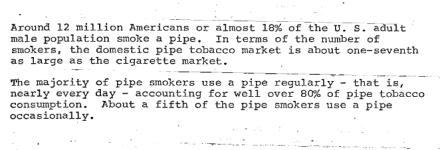This jogged a memory. When I was a kid I would accompany Pop to the local Sears and I remember the tobacco department. Completely forgot about that.@proteus, have you considered looking at Sears catalogs? No one here has personal knowledge. We're all too young.
This is from the fall 1923 edition (cigars and tobacco are only one page):
View attachment 246032
Types and Brands of Pipe Tobacco used, 1920's to 1940's
- Thread starter proteus
- Start date
You are using an out of date browser. It may not display this or other websites correctly.
You should upgrade or use an alternative browser.
You should upgrade or use an alternative browser.
SmokingPipes.com Updates
Watch for Updates Twice a Week
This jogged a memory. When I was a kid I would accompany Pop to the local Sears and I remember the tobacco department. Completely forgot about that.
Very cool, I had no idea. Was there one at Monkey Wards too?
I came across and gave to my late friend @weesel a couple of Sears key opener cans of Sear Tobacco but it was RYO. I never did know whether the old boy smoked the stuff or gave it someone else. They were like 1 lb tins if I remember correctly!
We rarely went to monkey wards, so I don't have any memory of one. May Company and Robinson's had tobacco departments as well.Very cool, I had no idea. Was there one at Monkey Wards too?
I've had a tin of pre-German McConnell Glen Piper. It was advertised as "honeydew" and it did taste like the melon. I thought it was delicious. The current Kopp version is advertised as rum and chocolate unfortunately.I was just reading that Harrod’s and was wondering if honeydew was referring to a flavored casing/topping or the color of leaf?
Hard to think there’s be a whole section of melon flavored tobak.
I would love to find another honeydew flavored blend. GH has Rich Dark Honeydew (now Spring Dew) which I've not had and am curious to taste.
Last edited:
I'm sorry to say that Van Nelle Zware is now a shadow of its glory days, when it was made at the "Black Widow" factory in Rotterdam and really was zware. Same general flavour, but not quite so full and the nicotine much reduced. I think it's made in Spain these days which, given Dutch history, is ironic.I believe in the olden days tobaccos are less processed, much stronger nicotines? I use to try my Dad's Van Nelle Shag, a Zware (heavy) - can't even taste it today, too much too hard


They would have been popular in the North but not national nor international. Each major city had its producers, for example Bells in Glasgow, Ogdens in Liverpool and Manchester and so on. Some of these were gobbled up by Imperial Tobacco etc but kept their identities and gained national distribution. Gawiths remained a small independent.I would have assumed that the Gawith boys would have featured heavily in the UK/Europe pipe smoking world, been at it since 1792. Not sure if their current iterations mirror days of yore though!?
Everything got slimmed down from the 1980s - I frequented many tobacco retailers in the 1970s and have lost count of the cigarette brands I've sampled, almost none of which survive today.
Reach out to Sutliff. They have a 175th Anniversary booklet and Greg over there did a ton of research about this. It talks all about the shift from local Tobacconist to national brands and has almost everything you are looking for.Doing more investigation found Sutliff mixture 79 was produced since 1933.
Any suggestions how? I'd like to read the booklet.Reach out to Sutliff.
Their distribution number for retailers of tobacco products is (804) 233-7668. sutliffdistribution.com info@sutliff-tobacco.com
Parent co.

 mac-baren.com
mac-baren.com
Parent co.

Contact us | Mac Baren Tobacco Company
We complain, justly so, about inflation.
All the people that personally remember the catastrophe of deflation from 1930-33 are dead.
Look, at the percentage decrease in the price of Prince Albert, Velvet and Edgeworth from the Sears catalogs of 1923 and 1938. And 1933 would have been worse.
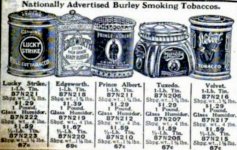

The human toll of misery and despair is beyond our imagination today.
Headline unemployment reached 25%, and only those looking for work counted, just as today.
Real GDP fell 29% from 1929 to 1933. The unemployment rate reached a peak of 25% in 1933. Consumer prices fell 25%; wholesale prices plummeted 32%.
There is a 60 acre field I still own that was sold to my Great Uncle Elmer in 1922 for the bargain family price of $66 an acre. It appraised at $100.
In 1936 Elmer grew weary of fighting against low prices and droughts and had a big auction.
His beautiful sister Eva who’d married a rich man paid $3.50 an acre.
Eva promised my father, a 17 year old kid, that if he’d share rent the 60 she’d sell him the land when he could pay $3.50 an acre himself.
By 1944 when my father had the money, Eva decided she had to have $15 an acre. He paid.
Who knows how much more valuable in constant dollars, that land is today.
I’ve heard all kinds of arguments of why the Great Depression happened.
But none about what ended It.
When the Japanese bombed Pearl Hatbor, that ended it, hopefully forever.
All the people that personally remember the catastrophe of deflation from 1930-33 are dead.
Look, at the percentage decrease in the price of Prince Albert, Velvet and Edgeworth from the Sears catalogs of 1923 and 1938. And 1933 would have been worse.


The human toll of misery and despair is beyond our imagination today.
Headline unemployment reached 25%, and only those looking for work counted, just as today.
Real GDP fell 29% from 1929 to 1933. The unemployment rate reached a peak of 25% in 1933. Consumer prices fell 25%; wholesale prices plummeted 32%.
There is a 60 acre field I still own that was sold to my Great Uncle Elmer in 1922 for the bargain family price of $66 an acre. It appraised at $100.
In 1936 Elmer grew weary of fighting against low prices and droughts and had a big auction.
His beautiful sister Eva who’d married a rich man paid $3.50 an acre.
Eva promised my father, a 17 year old kid, that if he’d share rent the 60 she’d sell him the land when he could pay $3.50 an acre himself.
By 1944 when my father had the money, Eva decided she had to have $15 an acre. He paid.
Who knows how much more valuable in constant dollars, that land is today.
I’ve heard all kinds of arguments of why the Great Depression happened.
But none about what ended It.
When the Japanese bombed Pearl Hatbor, that ended it, hopefully forever.
Last edited:
Ask Jeremy if he has any copies. jmckenna@sutliff-tobacco.comAny suggestions how? I'd like to read the booklet.
On radios in the Great Depression.
During the twenties radio started to become popular but radios were expensive, and since they were there weren’t many stations.
But although the Great Depression was an unprecedented economic disaster affecting all the modern world, there were still industries that boomed and one was radio.
As radios became smaller, cheaper, and better there were more buyers and more stations, until by 1939 only $2.50 down bought a choice of radios from Sears.
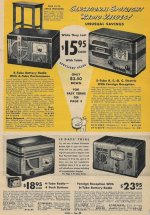
Notice the choices all ran on batteries, some also on household current.
In 1939 the Rural Electrification Administration was one huge war and a decade away from running power lines out to the vast rural communities that still had no electric power except batteries.
But Roy Acuff on the Grand Ole Opry sold a lot of Prince Albert and Matha White Self Rising Flour.
And while $16-24 may not sound like much in 1938 the first minimum wage was passed and wages for covered employees in industrial plants increased from $3-4 a week to eleven dollars a week, 25 cents an hour for 44 hours.
Farm laborers were exempt.
Field hands in Missouri earned about fifty cents a day.
Down further South, it was less.
During the twenties radio started to become popular but radios were expensive, and since they were there weren’t many stations.
But although the Great Depression was an unprecedented economic disaster affecting all the modern world, there were still industries that boomed and one was radio.
As radios became smaller, cheaper, and better there were more buyers and more stations, until by 1939 only $2.50 down bought a choice of radios from Sears.

Notice the choices all ran on batteries, some also on household current.
In 1939 the Rural Electrification Administration was one huge war and a decade away from running power lines out to the vast rural communities that still had no electric power except batteries.
But Roy Acuff on the Grand Ole Opry sold a lot of Prince Albert and Matha White Self Rising Flour.
And while $16-24 may not sound like much in 1938 the first minimum wage was passed and wages for covered employees in industrial plants increased from $3-4 a week to eleven dollars a week, 25 cents an hour for 44 hours.
Farm laborers were exempt.
Field hands in Missouri earned about fifty cents a day.
Down further South, it was less.
I think many people go into sticker shock when they see prices from the 1940s & 50s because they don't automatically convert the old prices to the equivalent in today's dollars.We complain, justly so, about inflation.
All the people that personally remember the catastrophe of deflation from 1930-33 are dead.
Look, at the percentage decrease in the price of Prince Albert, Velvet and Edgeworth from the Sears catalogs of 1923 and 1938. And 1933 would have been worse.
View attachment 311065
View attachment 311071
The human toll of misery and despair is beyond our imagination today.
Headline unemployment reached 25%, and only those looking for work counted, just as today.
Real GDP fell 29% from 1929 to 1933. The unemployment rate reached a peak of 25% in 1933. Consumer prices fell 25%; wholesale prices plummeted 32%.
There is a 60 acre field I still own that was sold to my Great Uncle Elmer in 1922 for the bargain family price of $66 an acre. It appraised at $100.
In 1936 Elmer grew weary of fighting against low prices and droughts and had a big auction.
His beautiful sister Eva who’d married a rich man paid $3.50 an acre.
Eva promised my father, a 17 year old kid, that if he’d share rent the 60 she’d sell him the land when he could pay $3.50 an acre himself.
By 1944 when my father had the money, Eva decided she had to have $15 an acre. He paid.
Who knows how much more valuable in constant dollars, that land is today.
I’ve heard all kinds of arguments of why the Great Depression happened.
But none about what ended It.
When the Japanese bombed Pearl Hatbor, that ended it, hopefully forever.
The 1 lb. can of Half & Half was only 73¢ in the bottom photo. In today's dollars that would be about $16.35 if the price was just adjusted for inflation. Unfortunately, adjusting for inflation doesn't take into consideration the additional taxes and fees that have been added by the government(s) nor does it take into consideration such things as labor and manufacturing costs.
That being said, what percentage of the average hourly wage was 73¢ back then.
I think many people go into sticker shock when they see prices from the 1940s & 50s because they don't automatically convert the old prices to the equivalent in today's dollars.
The 1 lb. can of Half & Half was only 73¢ in the bottom photo. In today's dollars that would be about $16.35 if the price was just adjusted for inflation. Unfortunately, adjusting for inflation doesn't take into consideration the additional taxes and fees that have been added by the government(s) nor does it take into consideration such things as labor and manufacturing costs.
That being said, what percentage of the average hourly wage was 73¢ back then.
Last night at a gas station there was a sign that read Marlboro $7.40, Winston $4.45, and 24/7 $2.45.
It takes two pounds of tobacco to make a thousand cigarettes (five cartons) and tobacco is about $2 a pound.
There is less than a dime’s worth of raw leaf in a package of cigarettes, a dollar federal tax, and they are a luxury, if your family needs food instead.
In 1931 the major manufacturers raised prices on a pack of cigarettes from a dime to fifteen cents.
In 1933 the major brands lowered their prices from 15 cents a pack, down to a dime.

History of cigarettes: the era of the dime - Cigsspot
By the early 1930s, the U.S. market was dominated by the “Big Three” brands: Camel, Lucky Strike and Chesterfield. The “Turkish” brands Murad, Melachrino and Rameses were still “afloat”, but their days were numbered. However, since the mid-1920s, to be exact in 1926, the leaders of the “Big...
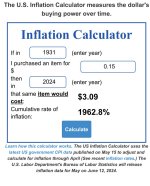

We cannot imagine, a world where a grown man worked all day in the fields for fifty cents and that bought a half a carton of cheap cigarettes that sell for $24 a carton today.
Even at the 1938 minimum wage of 25 cents an hour, a day’s pay bought two cartons of cheap cigarettes.
My Gramps smoked Days 'o Work plug. He would take it out of his pocket, along with a jackknife and carve off a few slices, rub 'em out in his big ole paws, and load his pipe. I think he mostly had a cob going. I was about 4.
That's raw product. You're not taking into account the cost of processing it though I can make two cartons of cigarettes for about $30.and tobacco is about $2 a pound.







